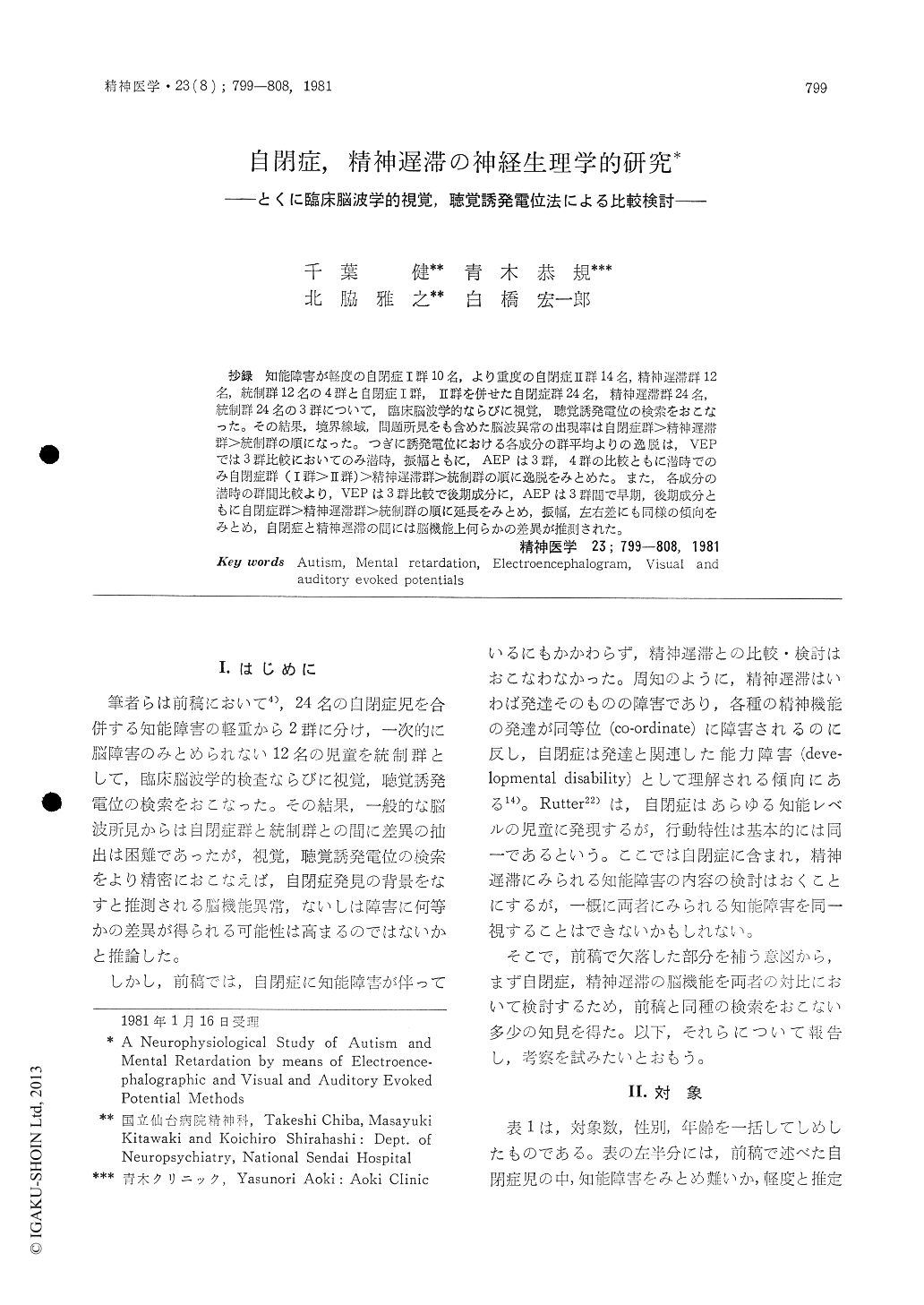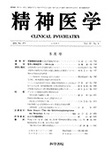Japanese
English
- 有料閲覧
- Abstract 文献概要
- 1ページ目 Look Inside
抄録 知能障害が軽度の自閉症Ⅰ群10名,より重度の自閉症Ⅱ群14名,精神遅滞群12名,統制群12名の4群と自閉症Ⅰ群,Ⅱ群を併せた自閉症群24名,精神遅滞群24名,統制群24名の3群について,臨床脳波学的ならびに視覚,聴覚誘発電位の検索をおこなった。その結果,境界線域,問題所見をも含めた脳波異常の出現率は自閉症群>精神遅滞群>統制群の順になった。つぎに誘発電位における各成分の群平均よりの逸脱は,VEPでは3群比較においてのみ潜時,振幅ともに,AEPは3群,4群の比較ともに潜時でのみ自閉症群(Ⅰ群>Ⅱ群)>精神遅滞群>統制群の順に逸脱をみとめた。また,各成分の潜時の群間比較より,VEPは3群比較で後期成分に,AEPは3群間で早期,後期成分ともに自閉症群>精神遅滞群>統制群の順に延長をみとめ,振幅,左右差にも同様の傾向をみとあ,自閉症と精神遅滞の間には脳機能上何らかの差異が推測された。
Attempts were made to evaluate the electroencephalogram and visual and auditory evoked potentials among four groups, which consisted of 10 autistic children with normal and nearly normal level of intelligence (group AⅠ), 14 with lower level of intelligence (group AⅡ), 12 mentally retarded children (group MR12) and 12 normal control children (group C12), and then among three groups which consisted of 24 autistic children of both groups AⅠ and AⅡ (group A), 24 mentally retarded children (group MR) and 24 normal control children (group C). The age ranged from 3 to 13 years and 2 to 13 years in the former and latter groups, respectively.
1) The incidence of EEG abnormalities was 25% in group A, 13% in group MR and 17% in group C. If borderline and equivocal EEG findings were considered as abnormal, the incidence of EEG abnormalities was in order of group A, group MR and group C.
2) As regards the latency of VEP, a divergence ratio over 2 from the average was 38% in group A and 29% in group MR. As regards the amplitude of VEP, it was 25% in group A and 17% in group MR.
Concerning both latency and amplitude only among three groups, the incidence of the divergence ratio was in order of group A, group MR and group C.
3) With respect to the latency of AEP, the divergence ratio over 2 from the average was 33% in group A and 25% in group MR. Regarding the amplitude of AEP, it was 4% in group A and 13% in group MR.
Only concerning the latency among both three and four groups, the incidence of the divergence ratio was in order of group A, group MR and group C.
4) In comparison with the latency of VEP components among four and three groups, it was significantly prolonged in order of group A, group MR and group C, especially in respect to the later component, but that of the earlier component was in the reverse order. The same findings of earlier and later components were noted in both amplitude and asymmetry.
The latency of AEP components was prolonged in the same order, in both earlier and later components. The same findings of earlier and later components were noted in both amplitude and asymmetry.
Consequently, it was suggested that there are some differences between autism and mental retardation. Also, the differences are not simply considered as originated from the developmental factors, and further investigation seems to be required to elucidate the differences between autism and mental retardation.

Copyright © 1981, Igaku-Shoin Ltd. All rights reserved.


